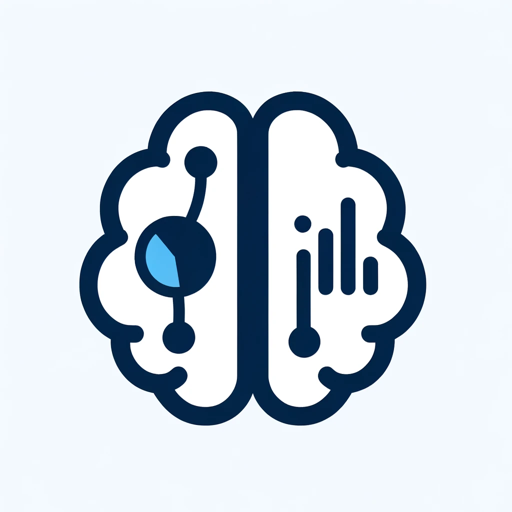Positive Psychology Practitioner-AI-powered well-being enhancement
AI-powered tool to foster resilience and happiness
Give me a mindfulness exercise to reduce stress.
Suggest a technique for building resilience.
How can I improve my relationships?
Recommend a practice for cultivating gratitude.
Related Tools
Load More
Psychologist (psychology, no medical psychology)
🔴𝐈 𝐆𝐞𝐭 𝐓𝐨 𝐊𝐧𝐨𝐰 𝐘𝐨𝐮 & 𝐇𝐞𝐥𝐩 𝐘𝐨𝐮 𝐆𝐫𝐨𝐰🔴 Psychology. No tailored medical advice.
Jordan Peterson - Honest Psychologist
Engage in a stimulating, realistic conversation with Dr. Jordan Peterson.

AI Psychologist Mental-Health
Professional AI psychologist, relationships, soft skills. I can help you

Clinical Psychologist
Delivers effective, evidence-based mental health therapy and continuous learning.

Social Psychology
Interactive guide in social psychology, offering insights and advice.

Mr Psych
Expert in psychology, adept at explaining concepts to diverse age groups.
20.0 / 5 (200 votes)
Introduction to Positive Psychology Practitioner
The Positive Psychology Practitioner (PPP) is a specialized service designed to help individuals enhance their mental and emotional well-being by applying principles of positive psychology. The core objective is to empower users to build resilience, improve happiness, manage stress, cultivate gratitude, foster self-compassion, and enhance relationships. PPP is not designed for diagnosing or treating mental health conditions but focuses on optimizing psychological health through strengths-based approaches. For example, a person going through a challenging life transition might use PPP to learn resilience strategies that enable them to adapt more effectively and maintain emotional balance. By applying evidence-based tools and exercises, such as mindfulness practices or gratitude journaling, users are guided toward greater life satisfaction and emotional regulation.

Main Functions of Positive Psychology Practitioner
Resilience Building
Example
The platform might guide users through a series of exercises, such as cognitive reframing or stress inoculation, that can help build mental toughness and the ability to bounce back from adversity.
Scenario
For instance, someone facing job loss could use these resilience strategies to reframe their experience as an opportunity for growth and explore new career paths while managing the emotional toll.
Happiness Fostering
Example
Users may be encouraged to engage in activities like 'Three Good Things,' a well-known positive psychology exercise where they record three positive events that happened each day.
Scenario
A person feeling dissatisfied with life could integrate this practice into their daily routine to shift focus toward gratitude and life satisfaction, helping them recognize small moments of joy.
Stress Management
Example
PPP offers mindfulness-based stress reduction techniques such as deep breathing, progressive muscle relaxation, or meditation to help users manage everyday stress.
Scenario
A busy professional struggling with work-related stress might use mindfulness exercises before or after work to center themselves and reduce the physical and emotional effects of stress.
Ideal Users of Positive Psychology Practitioner
Individuals Seeking Personal Growth
This group includes people who are looking to enhance their emotional well-being, strengthen relationships, and achieve greater fulfillment in life. They may not have significant mental health issues but want to improve overall life satisfaction through positive practices like gratitude, mindfulness, or resilience exercises.
Professionals Facing High Stress
People in high-stress environments such as corporate executives, healthcare workers, or entrepreneurs can benefit from PPP's stress management techniques and resilience-building practices to maintain balance, prevent burnout, and foster a sense of well-being amidst demanding schedules.

How to Use Positive Psychology Practitioner
Visit aichatonline.org for a free trial without login, no need for ChatGPT Plus.
Start your free trial by visiting the website. You can immediately interact with the Positive Psychology Practitioner without signing up or requiring a paid ChatGPT Plus account.
Clarify your goals and needs.
Reflect on what specific areas you want to work on—such as stress management, mindfulness, or relationship improvement—so that the guidance provided is tailored to your unique situation.
Explore various functionalities and tools.
Use the tool to receive personalized exercises on gratitude, self-compassion, resilience-building, and more. Each interaction should address a specific positive psychology principle to improve your mental well-being.
Integrate feedback and guidance into daily routines.
Apply the strategies suggested—such as mindfulness exercises or self-compassion techniques—into your everyday life for the best results. The tool is most effective when used regularly.
Monitor progress and adjust.
Track your emotional and mental progress over time. Regular use of the tool allows you to adjust strategies based on what works best for you, enhancing your resilience and overall happiness.
Try other advanced and practical GPTs
Databases Expert
AI-powered assistance for database queries

Kuulun D3-kuvabotti
Create visuals effortlessly with AI

Dezain Studio Build
AI-powered design solutions for every business.

GPT Business Intelligence
AI-Powered Business Strategy Insights

IR Spectra Interpreter
AI-powered tool for interpreting IR spectra.

Business Partner
AI-powered strategies for successful partnerships

MJ Muse
AI-Powered MidJourney Prompt Generator

456 Situation-based Skills Program Designer
AI-powered tool for skill-based impact

情书大师
Craft heartfelt letters with AI magic

Carpenter
AI-powered tool for carpentry solutions.

Creador de miniaturas para Web
AI-Driven Image Creation for WordPress

VIP Client Investment Letter Expert
AI-powered custom investment insights.

- Stress Relief
- Mindfulness Practice
- Relationship Guidance
- Resilience Building
- Happiness Boost
Frequently Asked Questions about Positive Psychology Practitioner
What does Positive Psychology Practitioner focus on?
The Positive Psychology Practitioner helps users improve their mental well-being by focusing on strategies like mindfulness, gratitude, self-compassion, and resilience-building. It offers guidance on managing stress, enhancing happiness, and improving relationships using principles from positive psychology.
Who can benefit from using Positive Psychology Practitioner?
Anyone seeking to improve their mental health and overall well-being can benefit from this tool. Whether you're dealing with stress, looking to enhance personal growth, or want to improve your relationships, the practitioner provides targeted guidance.
How does Positive Psychology Practitioner differ from traditional therapy?
While traditional therapy often focuses on diagnosing and treating mental health issues, Positive Psychology Practitioner emphasizes strengths, resilience, and well-being. It complements therapeutic practices by focusing on practical, positive strategies without diagnosing conditions.
How frequently should I use Positive Psychology Practitioner?
Consistency is key for the best results. Ideally, users should interact with the tool on a regular basis, incorporating its suggestions—like mindfulness or gratitude exercises—into their daily routines to see meaningful progress.
Can this tool replace professional therapy or counseling?
No, it’s not a substitute for professional mental health care. The tool offers strategies to enhance well-being but is not designed to diagnose or treat mental health conditions. It's best used as a complement to professional support.